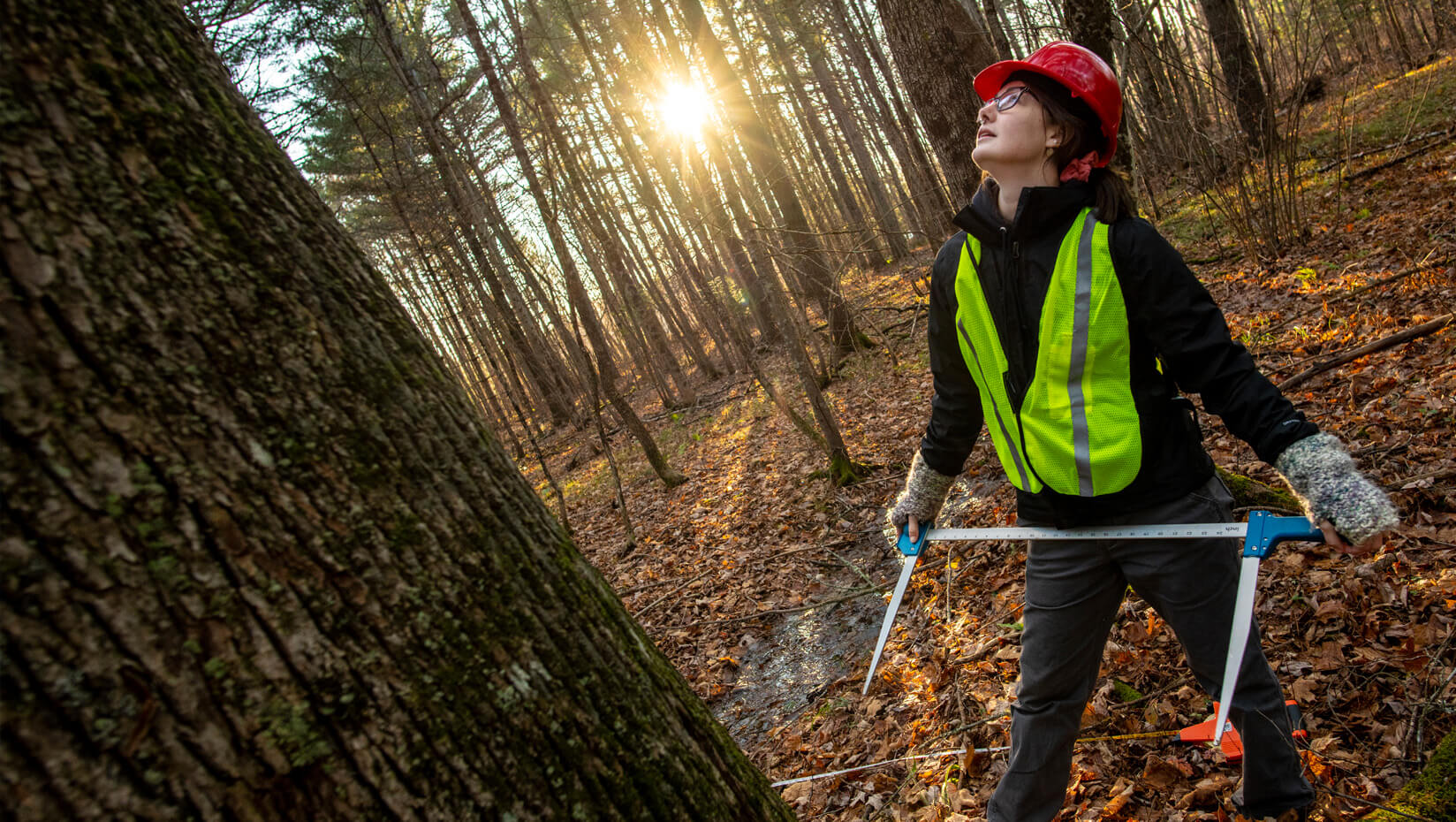
SWIFT action positively impacts women in forestry
Just as a healthy forest is a diverse forest, a healthy forestry industry is a diverse forestry industry.
Judging by the numbers, the profession could stand some variety. For instance, in Maine, just 8% of licensed foresters (52 of 680) are women.
Educational institutions have a role in increasing those numbers. Research has indicated that colleges and universities’ success or failure to recruit and retain gender diversity directly influences the diversity of applicants for forestry jobs.
In 2016, a group of female University of Maine faculty and students concerned with the low number of women graduating from UMaine with bachelor’s degrees in forestry formed SWIFT (Supporting Women in Forestry Today).
The goal: To increase and retain the number of women in forestry — from education to employment.
That requires plugging “leaks” in the education-to-employment pipeline. Leaks can spring because of an unwelcoming climate, the perception that forestry is a “male” profession, a lack of a sense of belonging, and a perceived dearth of opportunities, says Mindy Crandall, a former UMaine assistant professor of forest landscape management.
During Crandall’s case study of SWIFT, women surveyed in the UMaine School of Forest Resources listed the top three challenges facing women in forestry as: bias, microaggressions and discrimination; isolation, lack of support and networking struggles; and unequal pay and inequality (in 2016), and challenges and barriers to addressing discrimination (in 2019).
Fixing the leaks is imperative.
“Increasing demographic diversity in forestry benefits us all, on an individual and collective level,” writes Crandall, now an assistant professor at Oregon State University. “Forestry needs creativity more than ever as we balance competing objectives and social preferences related to land management.”
SWIFT takes an adaptive and evidence-based approach while hosting events each academic year to create an inclusive environment.
Educational readings, discussions, panel sessions, social events, and hands-on training showed promise as ways to effectively engage women in the forestry profession and increase the likelihood they will complete the program and join the workforce, says Crandall.
Respondents reported feeling more aware, connected, confident, and equipped to recognize and respond to bias and discrimination than before SWIFT.
In 2019, a respondent wrote: “In the past, I sometimes wondered if negative experiences I had as a woman in forestry were due to something I was doing wrong. When encountering gender bias, I would feel uncertain and not respond effectively. Those experiences made me feel isolated and alone. Now I am able to recognize those experiences for what they are, and I know that they are happening because I am a woman and not because of something that is my fault.”
While enrollment of women has increased since 2009 in the School of Forest Resources, in several years, no (2014) or one (2009, 2016) woman graduated with a bachelor’s degree in forestry.
And although women accounted for 43% of graduate students in 2018–19 in the School of Forest Resources, most did not have an undergraduate forestry degree. Crandall says this indicates a potential lack of awareness to enter the profession at an earlier stage.
That lack of awareness could stem from few visible role models. UMaine had one tenure-track female faculty member within its Society of American Foresters’ accredited forestry program between 1981 and 2006. And none from 2006 to 2014.
Crandall says while it’s too soon to quantitatively assess SWIFT’s impact on female student enrollment and graduation rates, the case study provides evidence that small-scale groups like SWIFT can instigate larger-scale positive changes for women in forestry.
A female student survey respondent wrote that an inclusive environment can help women in college avoid “turning away from what they love professionally to do what feels safer and more inclusive.’”
Another wrote that SWIFT was “reinforcing an image that we, as a department, are doing more than talking about enacting change. It shows organization, longevity, and a positive trajectory for shattering glass ceilings.”
While progress has been made, the survey results are in line with other studies that emphasize both perceived and actual professional and social penalties for women who speak up.
And despite the emergence of the #MeToo movement between the two survey periods (2016 and 2019), Crandall says it’s still difficult for women in forestry to interrupt harassment, bias, discrimination, and safety issues.
Multiple survey respondents across both survey years cited the need to address: the confidence gap between men and women; safety; the perception of men that women have physical limitations in the field; a lack of diversity and representation in forestry; and “straight up” sexual harassment.
Crandall says SWIFT’s organizational framework could be adapted and incorporated in other settings that have a goal of improving experiences and retention of women in forestry.
Laura Kenefic, faculty associate in the UMaine School of Forest Resources and a U.S. Forest Service research forester; Jessica Leahy, professor in the UMaine School of Forest Resources; Kara Costanza, U.S. Forest Service plant pathologist; and Jenna Zukswert, a former UMaine employee who’s now a Ph.D. student at the State University of New York, conducted the research with Crandall.
The Journal of Forestry published the study, “An Adaptive and Evidence-Based Approach to Building and Retaining Gender Diversity within a University Forestry Education Program: A Case Study of SWIFT,” in February.
Contact: Beth Staples, 207.581.3777, beth.staples@maine.edu
